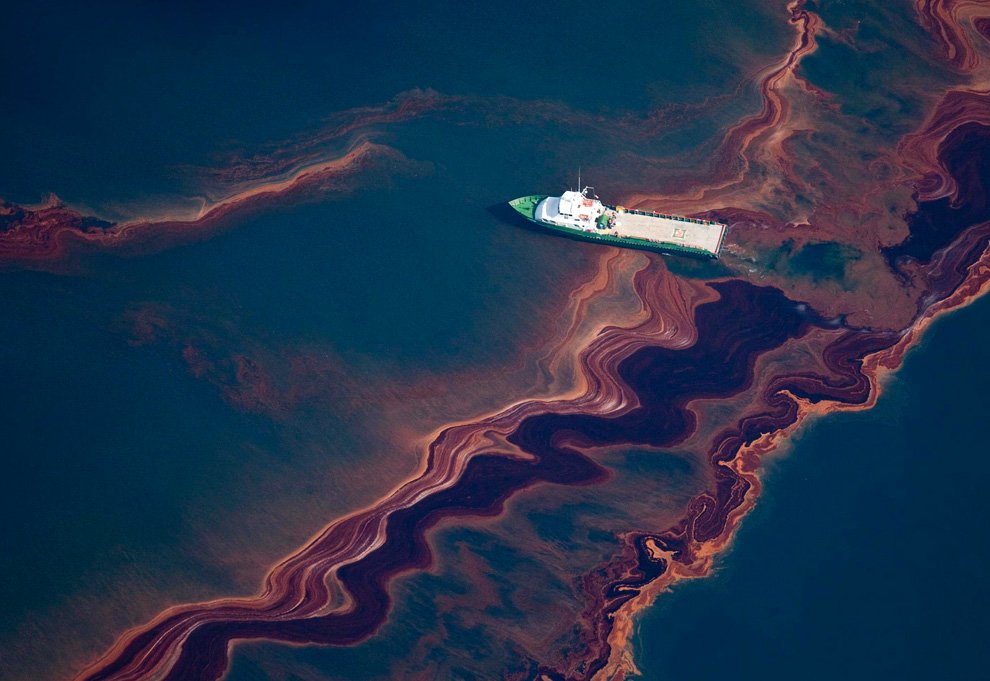 Initial reports regarding the Deepwater Horizon disaster indicated that BP was self insured for the costs of the massive cleanup effort that will likely be required for years to come. While BP claims to be willing to pay for all “legitimate claims”, it is already inevitable that the economic fallout will extend far beyond BP’s shareholders.
Initial reports regarding the Deepwater Horizon disaster indicated that BP was self insured for the costs of the massive cleanup effort that will likely be required for years to come. While BP claims to be willing to pay for all “legitimate claims”, it is already inevitable that the economic fallout will extend far beyond BP’s shareholders.
Swiss Re has announced that preliminary estimates of costs associated with the spill range from $1.5 billion to $3.5 billion. This estimate was made in early May and is likely to increase given the lack of progress in stopping the leak since then. It is very likely that other insurance companies will be announcing cost estimates over the coming weeks and months.
Premium Increases: 15 to 50 Percent
It comes as little surprise that insurance premiums for offshore drilling have increased dramatically in recent weeks. The Wall Street Journal reports that premiums are up by 15 to 20 percent for rigs operating in shallow water and as high as 50 percent for operations that are further out to sea. Apparently, insurance premiums were priced primarily to account for the risk of loss associated with hurricane activity and failed to fully account for the costs of catastrophic blowouts like the one that sank the Deepwater Horizon.
In addition, proposals in Congress call for increasing the maximum liability for drillers to $10 billion from $75 million. If such legislation becomes law, offshore operators are certain to face much higher premiums to account for the additional liability coverage.
One Size Does Not Fit All
The dismal response to the Deepwater Horizon disaster by BP has proven beyond any doubt that contingency plans for blowouts were inadequate. The fact that deep sea drilling accidents have been relatively rare does not change the fact that a single incident of a well that cannot be capped has resulted in an economic calamity for the Gulf Coast as well as a national security issue that the Federal Government has been unable to address.
With this disaster fresh in the minds of the public, one hopes that caution and common sense will prevail when the government determines how to go about increasing liability caps. Rather than using a one size fits all solution and increasing caps to $10 billion for all types of drilling, there should be some differentiation between shallow water and deep water wells. A well in 200 feet of water is obviously much different than a well operating 5,000 feet beneath the surface. Most importantly, shallow water wells can be capped by divers while no human being can survive the crushing pressure involved with the Deepwater Horizon well.
Recently, Contango Oil & Gas CEO Kenneth Peak released a letter to shareholders regarding the Deepwater Horizon disaster. Here are a few excerpts from his letter:
Contango’s GOM operations and current prospects are concentrated entirely in water depths of less than 200 feet. The technology and operational risks required to drill in water of this depth have been available to the industry for over 30 years and do not pose the same kind of operating challenges as deep water drilling. Moreover, at depths of less than 200 feet it is possible to send divers directly to the mud line of the well bore. Will the Congress, the EPA, the MMS, and other regulatory agencies responsible for drafting rules and regulations differentiate between deep water and “shallow” water drilling? I do not know but it seems logical that they should.
…
We carry $75 million of well control insurance (8/8ths) in the event of a blow-out. This insurance would cover gaining control of the well as a result of a blow-out, re-drilling the well, pollution, cleanup and containment arising from an out of control well, and any resultant plugging and abandonment expense. We also carry $100 million of third-party liability insurance which includes sudden and accidental pollution liability. Recent proposed legislation could result in requirements for much greater insurance coverage that could extend as high as $10 billion. We would need to evaluate the cost and feasibility of obtaining such insurance.
Despite Anger, Intelligent Regulation Called For
“This is America — come on. We’re going to have lots of illegitimate claims. We all know that.” — BP CEO Tony Hayward as quoted in The Times of London
Clearly BP’s CEO is not an expert in public relations or even plain common sense given some of his recent comments, of which the one quoted above is typical. There is no doubt that anger is well directed toward Mr. Hayward as well as BP. The company should be held accountable. At the same time, acting in anger is never productive.
The disaster in the Gulf of Mexico must act as a wakeup call for industry and government to more carefully assess the safety mechanisms in place for drilling at crushing depths beneath the sea. It would seem perfectly warranted for the government to call for a complete moratorium on all deepwater drilling until the cause of the Deepwater Horizon disaster is fully understood and more robust disaster recovery mechanisms can be put in place. At the same time, government regulations that economically threaten shallow water drilling operations with a much more benign risk profile would serve no useful purpose.
Disclosure: The author owns shares of Berkshire Hathaway. Berkshire is a large investor in Swiss Re and may also be exposed to the oil spill through subsidiaries. The author owns shares of Contango Oil & Gas.
